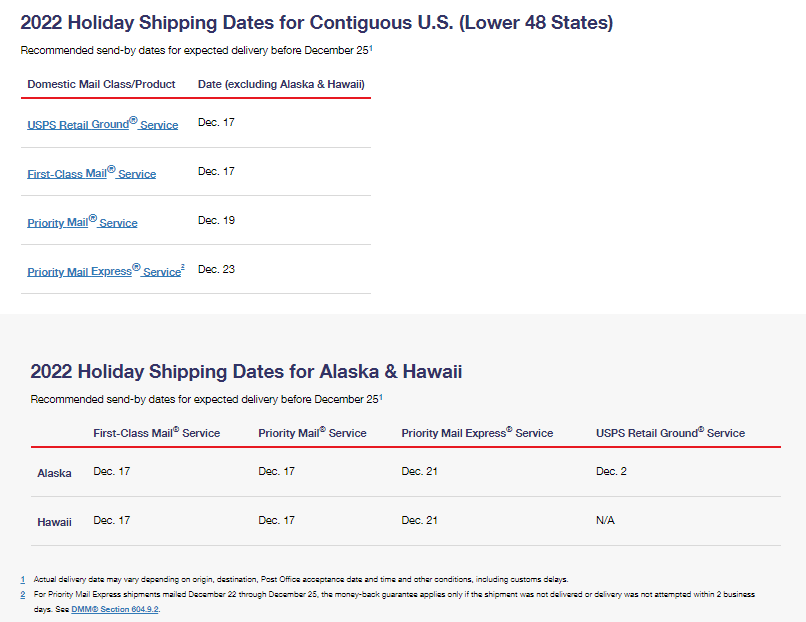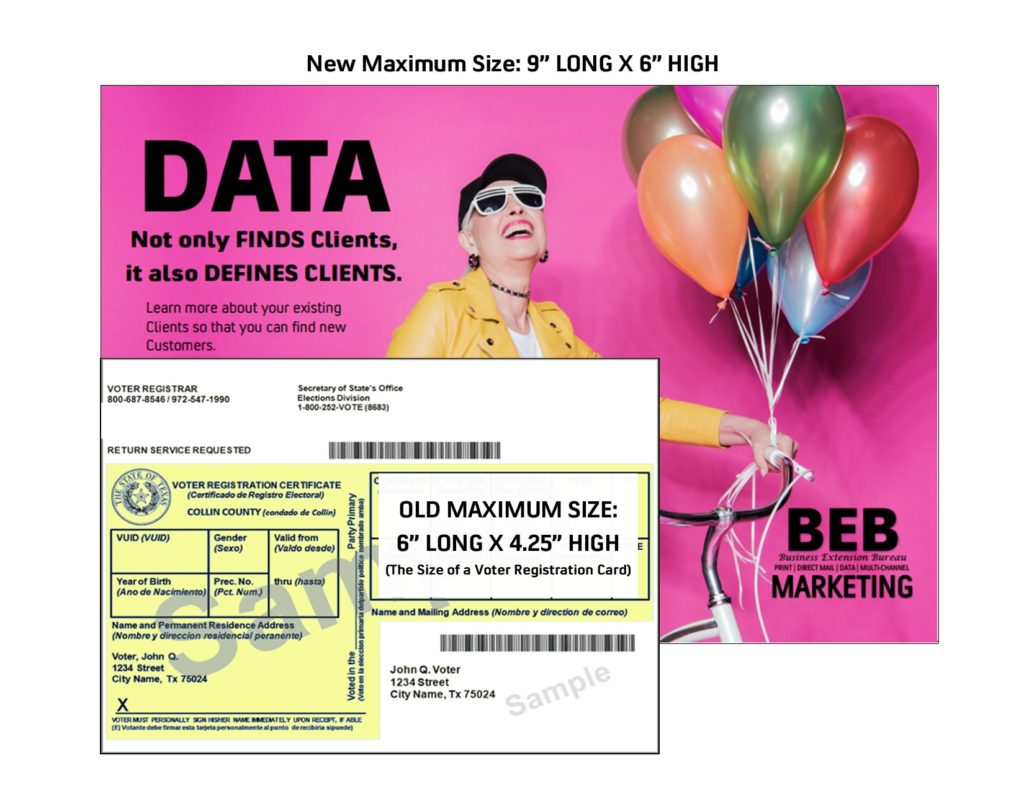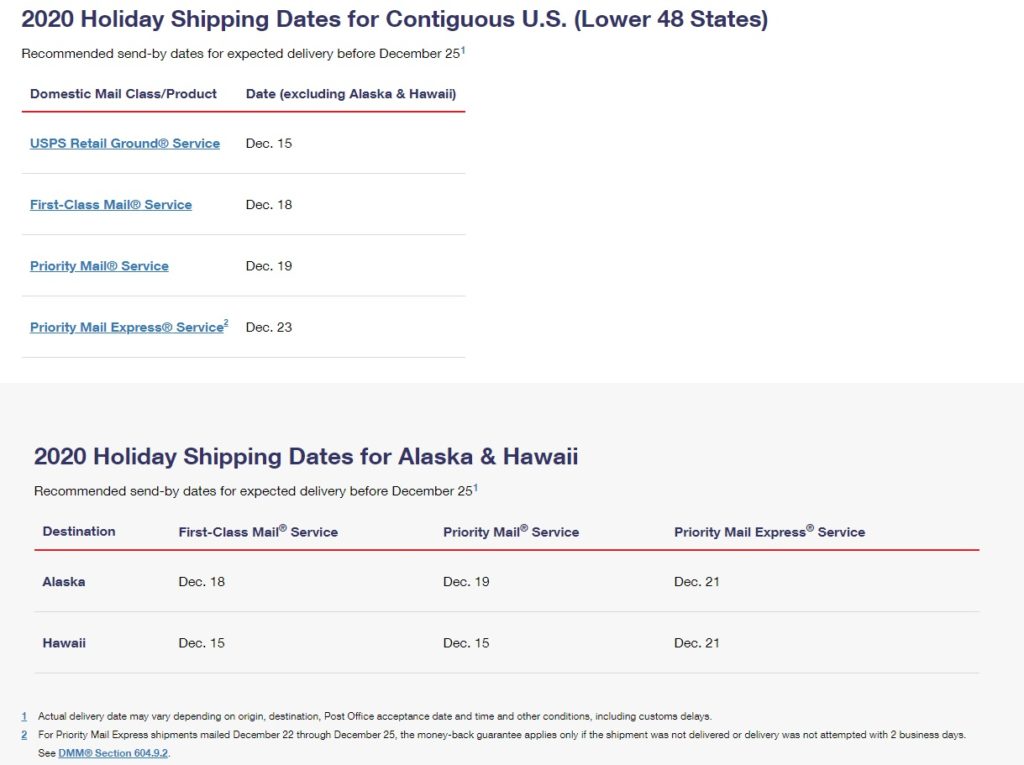Click here to get more details on USPS Domestic Holiday Shipping dates.
Tag Archives: USPS
The USPS Holiday Heist
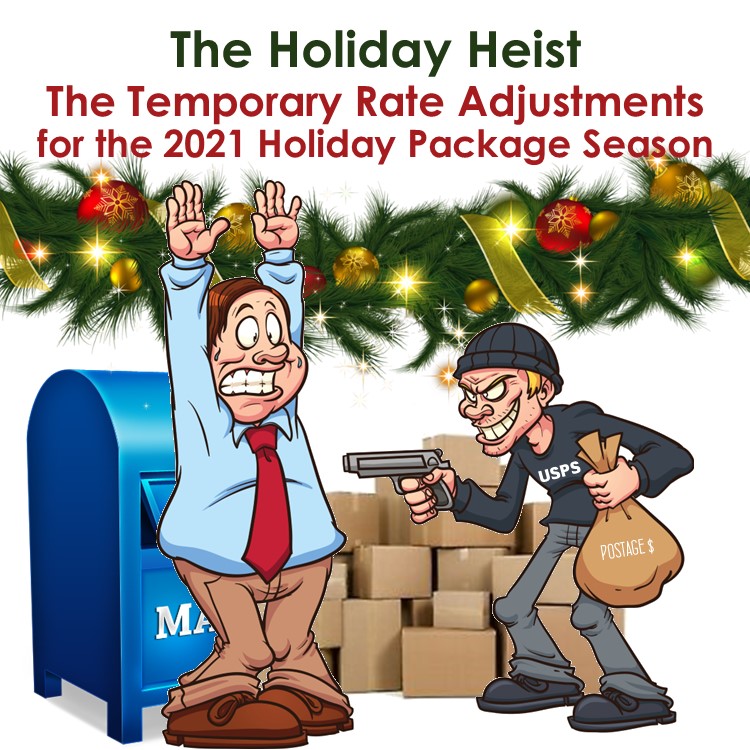 U.S. Postal Service Announces Proposed Temporary Rate Adjustments for 2021 Peak Holiday Season
U.S. Postal Service Announces Proposed Temporary Rate Adjustments for 2021 Peak Holiday Season
WASHINGTON – The United States Postal Service filed notice the Postal Regulatory Commission (PRC) regarding a temporary price adjustment for key package products for the 2021 peak holiday season. This temporary rate adjustment , which was approved by the Board of Governors Aug. 5, will affect prices on commercial and retail domestic competitive parcels – Priority Mail Express (PME), Priority Mail (PM), First-Class Package Service (FCPS), Parcel Select, USPS Retail Ground, and Parcel Return Service. International products would be unaffected. Pending final approval by the PRC, the temporary rates will go into effect on Oct. 3, 2021, and remain in place until Dec. 26, 2021.
The planned price changes include:
Priority Mail, Priority Mail Express, Parcel Select Ground and USPS Retail Ground:
• $0.75 increase for PM and PME Flat Rate Boxes and Envelopes.
• $0.25 increase for Zones 1-4, 0-10 lbs.
• $0.75 increase for Zones 5-9, 0-10 lbs.
• $1.50 increase for Zones 1-4, 11-20 lbs.
• $3.00 increase for Zones 5-9, 11-20lbs.
• $2.50 increase for Zones 1-4, 21-70 lbs.
• $5.00 increase for Zones 5-9, 21-70 lbs.
A full list of commercial and retail pricing can be found on the Postal Service’s Postal Explorer website https://pe.usps.com/text/dmm300/Notice123.htm
First-Class Postcards Just Got Bigger
On July 28, 2021, the Postal Regulatory Commission (PRC) approved increasing the size limit for a Presorted First-Class Mail (FCM) Postcard. The new 9″ by 6″ maximum size card has a slightly different minimum thickness of .009″ compared to the previous maximum size dimensions of 6″ by 4.25″ with a minimum thickness of .007″. (The minimum .007″ thickness still applies to cards less than 6″X9″).
Previous dimension restrictions made it easy for First-Class Postcards to “get lost” in the mailbox as larger pieces pulled away attention, and marketers didn’t have the needed space to sell products or services. The Postal Service argued that the proposed change would make the First-Class Postcards more valuable by creating new opportunities for marketers and nonprofits to take advantage of technologies such as QR codes and variable personalization making them even more effective.
Being able to send larger cards using First-Class Postcards rates will also give mailers faster delivery service circumventing the recent reduction of delivery standards recently implemented.
See the size comparison below:
USPS Delivery Standard Changes? What EXACTLY is Dejoy Proposing?
 USPMG, Louis DeJoy, outlined his vision and 10-year plan for the USPS in March. He calls it, “Delivering for America.” His plan has caused a lot of controversy surrounding delayed delivery standards. What exactly did he propose? Read on.
USPMG, Louis DeJoy, outlined his vision and 10-year plan for the USPS in March. He calls it, “Delivering for America.” His plan has caused a lot of controversy surrounding delayed delivery standards. What exactly did he propose? Read on.
The Postal Service sets standards for mail delivery so that customers and mailers can expect consistent and predictable delivery. However, the USPS has not met current targets for First-Class Mail service standards (3-5 days) in the past eight years. DeJoy says that the current standards don’t reflect the declining letter volumes and require the USPS to use complex and expensive transportation networks. He claims that today’s delivery standards are unsuitable for setting realistic expectations for timely and reliable mail delivery.
It was pointed out that the cost to maintain the current, and unattained service standards, will continue to increase if mail volume continues to decrease as projected. The need to ensure reliable service, while improving operational efficiency and precision, requires that old standards get updated.
His plan is to modify existing service standards for First-Class Mail Letters and Flats from a 3-day service standard within the continental United States to a 1-5 day service standard.
The proposal would enable 43% of that portion of First-Class Mail which is currently transported via air to shift to getting transported via ground. It would also require adjustments to the service standards for full network Periodicals which travel with First-Class Mail.
The Postal Service will seek public comment through the formal rulemaking process and will request an advisory opinion from the PRC concerning this proposed change before it is implemented.
Below is a summary of the impacts of the new service standards:
- Service standards for Commercial First-Class Mail entered at a local facility will not change.
- First-Class Mail traveling within a local area (up to a three-hour drive time) will not experience a service standard change and would still be delivered within two days
- 61% of current First-Class Mail volume and 93% of current Periodicals volume will stay at its current standard.
- 81% of current First-Class 2-day volume will retain its two-day standard.
- Overall, 70% of First-Class Mail volume would receive a standard of one to three days.
- Current First-Class 3-day volume will be subject to a 3, 4, or 5 day service standard, depending on the distance between origin processing facility and destination processing facility.
- Of the current First-Class 3 day volume:
- 47% will remain three-day
- 37%will move to 4 day
- 17% percent will move to 5-day.
In addition, DeJoy proposes to adjust the service standards for First-Class Packages to enable a greater percentage of that volume to be moved by surface transportation. The Postal Service will also request an advisory opinion from the PRC concerning this proposed change before
it is implemented.
Parcel Market Grows Bigger and Faster
The package market has experienced unprecedented growth and is projected to continue for years to come. It is estimated that the U.S. parcel market to grow 6% to 11% annually from 2020 to 2025. Consumers demand shorter shipping windows as online sales are surging. It was reported that during 2020, shipping customers selected 1-2 day delivery service 72% of the time. Some estimates show that number could go as high as 90% by 2025. Another notable trend is that online shoppers want to buy local.
HOW COVID-19 AFFECTED DELIVERY
The COVID-19 pandemic exacerbated the financial, operational, and service performances of the USPS. Here’s how:
Employee Availability
The cumulative number of employees quarantined reached 19.1%, while non-career employee turnover rate hit 40%.
Transportation
Lack of airplane and truck capacity, and industry competition for both, disrupted the supply chain and transportation resources particularly during the holiday season
Shift in Mail/Package Composition
A dramatic decline in First Class Mail combined with an unprecedented package volume increase of 40%
The postal service continued to deliver to its 160 million address client base throughout 2020. However, constraints in processing and transportation networks prevented timely and consistent arrival of product.
Package delivery is expected to continue to rise in the coming decade. While this dynamic will create strong opportunities for the Postal Service and may leverage it to be even
more relevant, it also requires significant changes to its operating model. In the coming months we are anxious to learn what USPMG Louis DeJoy’s 10-year vision for the postal will be.
USPS Gets a Boost From COVID Bill
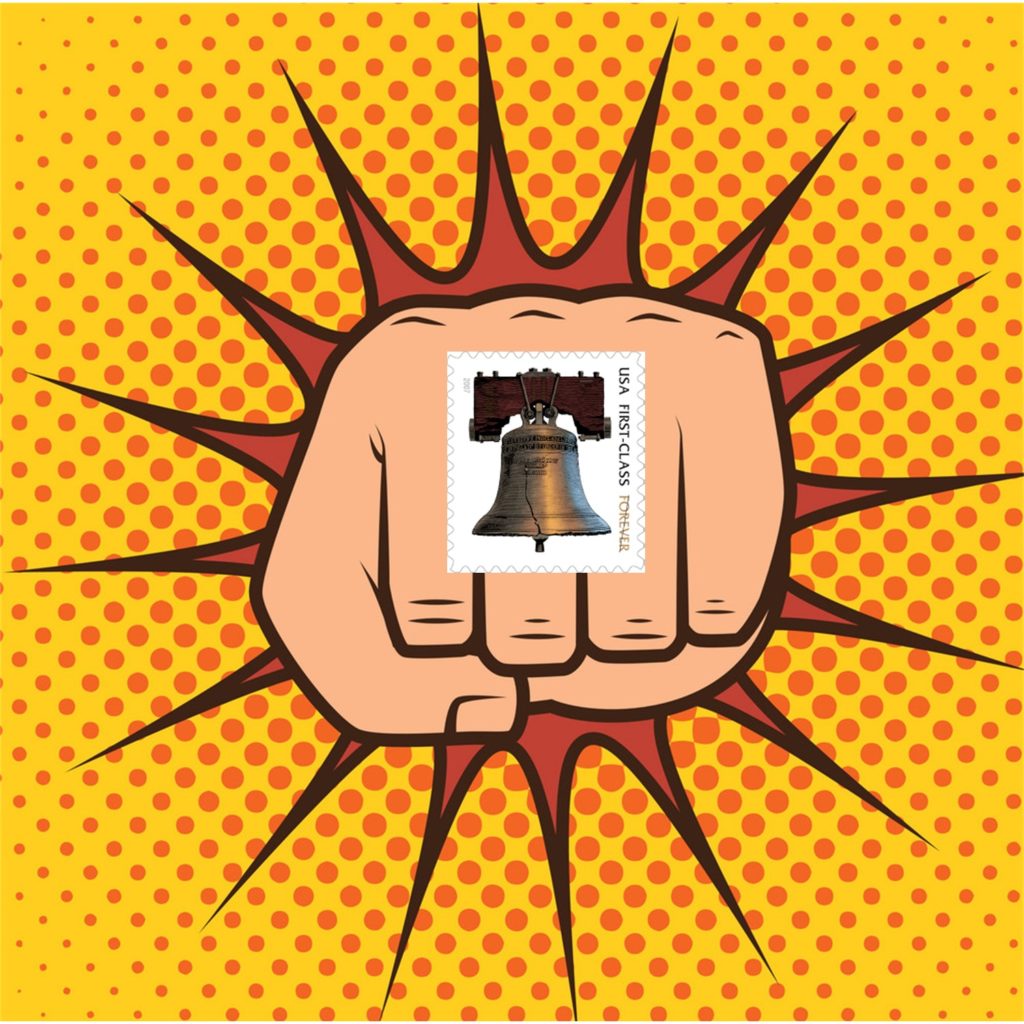 After passing a series of multi-trillion dollar COVID-relief measures, Congress has finally provided some financial support for the Postal Service with the Consolidated Appropriations Act of 2021.
After passing a series of multi-trillion dollar COVID-relief measures, Congress has finally provided some financial support for the Postal Service with the Consolidated Appropriations Act of 2021.
The bill changes the $10 billion loan to the Postal Service authorized by the CARES Act (enacted March 27, 2020) into a grant.
Also, the STOP Act from October 2018, requires the Postal Service to receive from foreign postal administrations electronic information about the sender, recipient, and contents of 100% of inbound parcels, and transmit to Customs and Border Protection, by December 31, 2020. Most foreign posts aren’t able to provide that data yet, and the USPS and Customs and Border Protection have encountered other challenges in meeting the deadline. This extends the cut-off date to March 15, 2021.


